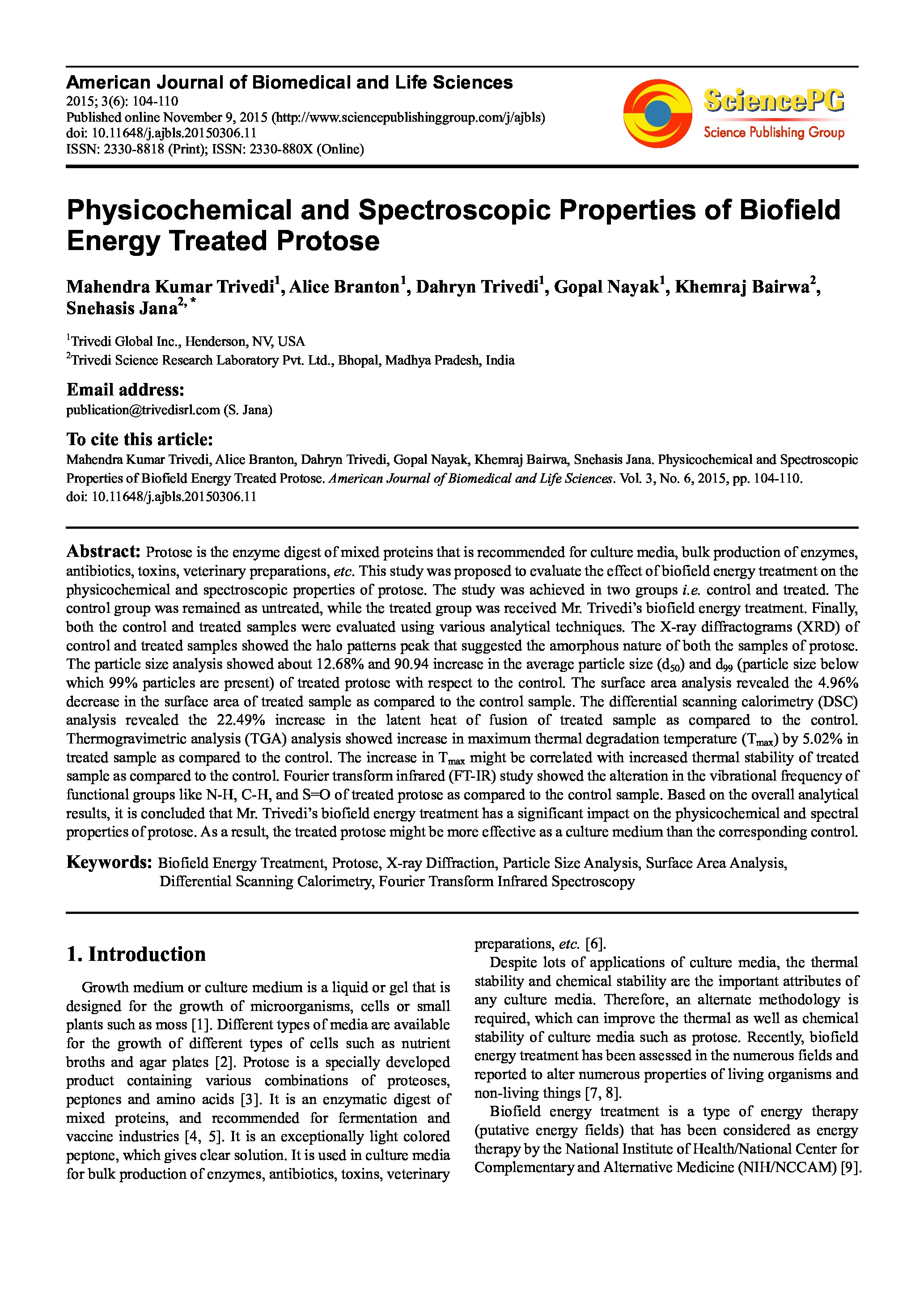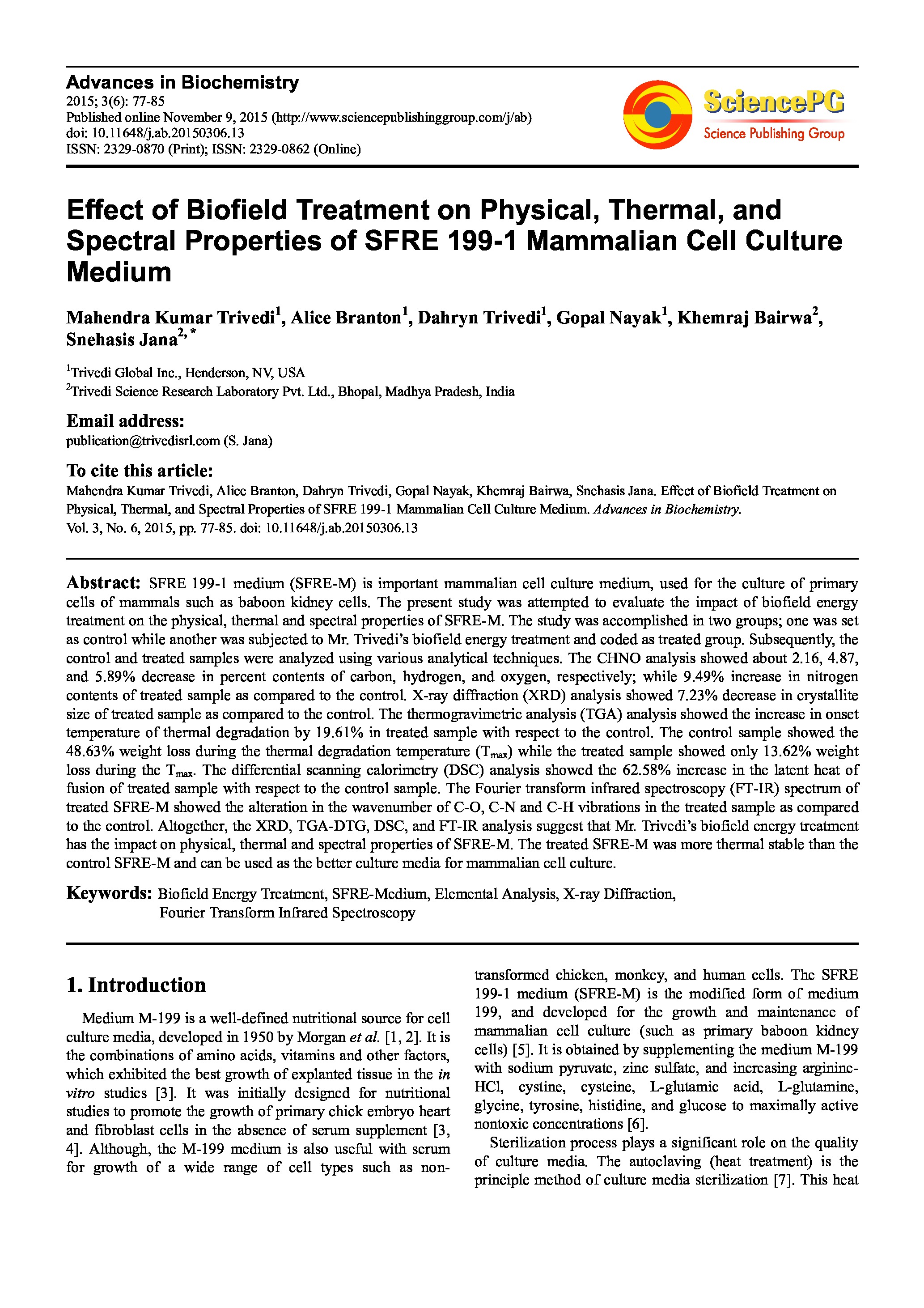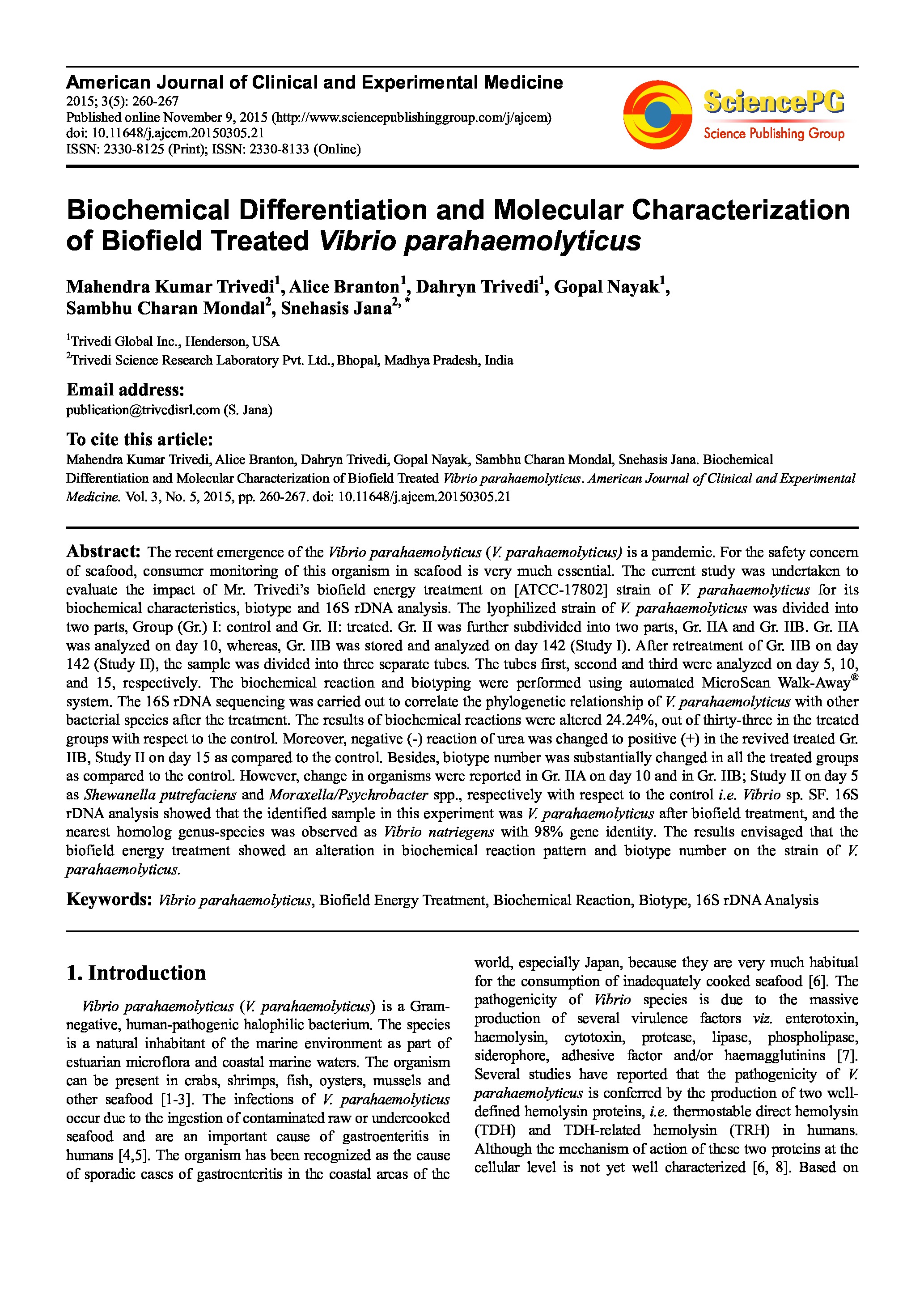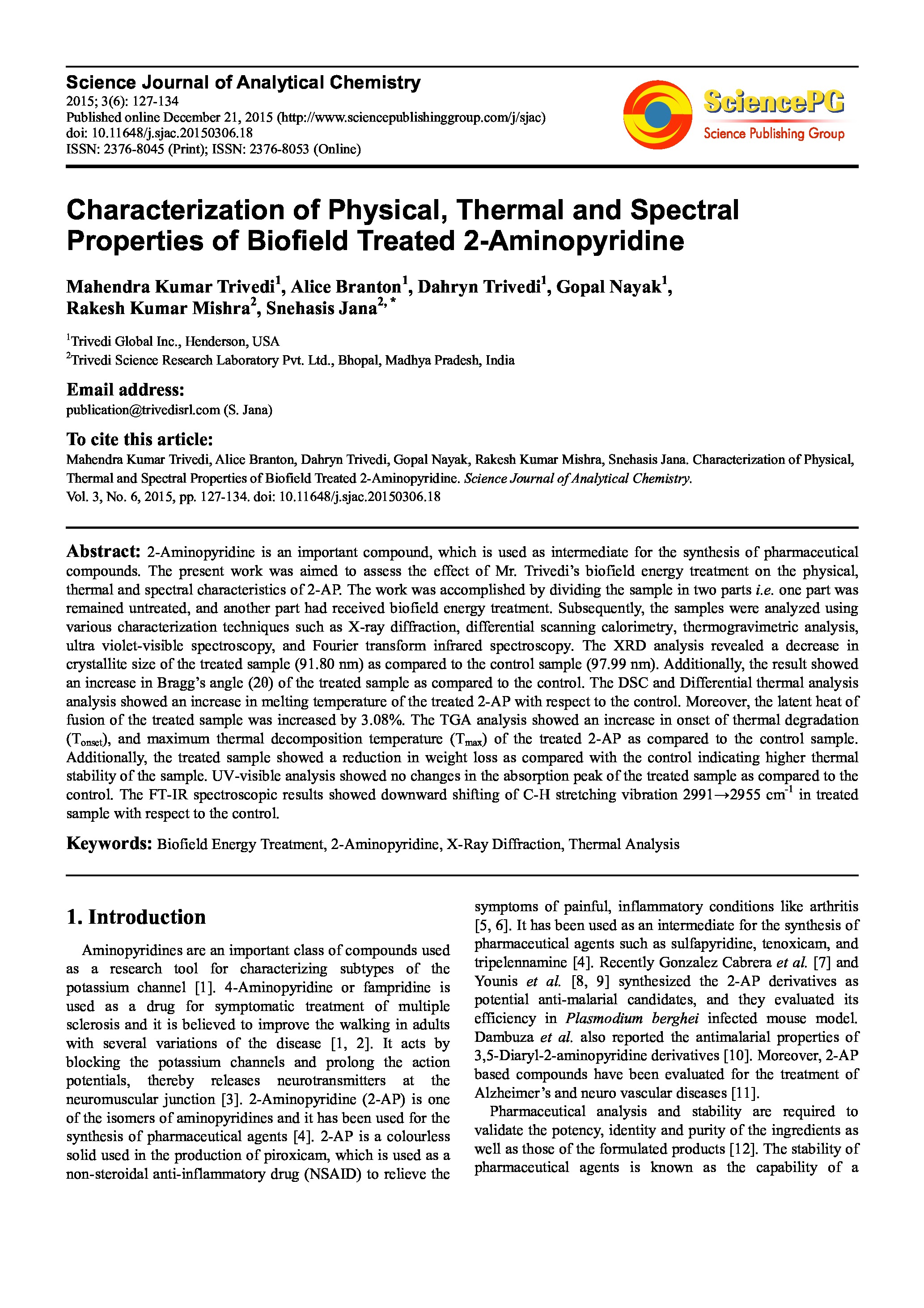Date of upload:
30.08.2016
Co-author:
Alice Branton, Dahryn Trivedi, Gopal Nayak, Sambhu Charan Mondal, Snehasis Jana
Abstract:
The recent emergence of the Vibrio parahaemolyticus (V. parahaemolyticus) is a pandemic. For the safety concern of seafood, consumer monitoring of this organism in seafood is very much essential. The current study was undertaken to evaluate the impact of Mr. Trivedi’s biofield energy treatment on [ATCC-17802] strain of V. parahaemolyticus for its biochemical characteristics, biotype and 16S rDNA analysis. The lyophilized strain of V. parahaemolyticus was divided into two parts, Group (Gr.) I: control and Gr. II: treated. Gr. II was further subdivided into two parts, Gr. IIA and Gr. IIB. Gr. IIA was analyzed on day 10, whereas, Gr. IIB was stored and analyzed on day 142 (Study I). After retreatment of Gr. IIB on day 142 (Study II), the sample was divided into three separate tubes. The tubes first, second and third were analyzed on day 5, 10, and 15, respectively. The biochemical reaction and biotyping were performed using automated MicroScan Walk-Away® system. The 16S rDNA sequencing was carried out to correlate the phylogenetic relationship of V. parahaemolyticus with other bacterial species after the treatment. The results of biochemical reactions were altered 24.24%, out of thirty-three in the treated groups with respect to the control. Moreover, negative (-) reaction of urea was changed to positive (+) in the revived treated Gr. IIB, Study II on day 15 as compared to the control. Besides, biotype number was substantially changed in all the treated groups as compared to the control. However, change in organisms were reported in Gr. IIA on day 10 and in Gr. IIB; Study II on day 5 as Shewanella putrefaciens and Moraxella/Psychrobacter spp., respectively with respect to the control i.e. Vibrio sp. SF. 16S rDNA analysis showed that the identified sample in this experiment was V. parahaemolyticus after biofield treatment, and the nearest homolog genus-species was observed as Vibrio natriegens with 98% gene identity. The results envisaged that the biofield energy treatment showed an alteration in biochemical reaction pattern and biotype number on the strain of V. parahaemolyticus.




